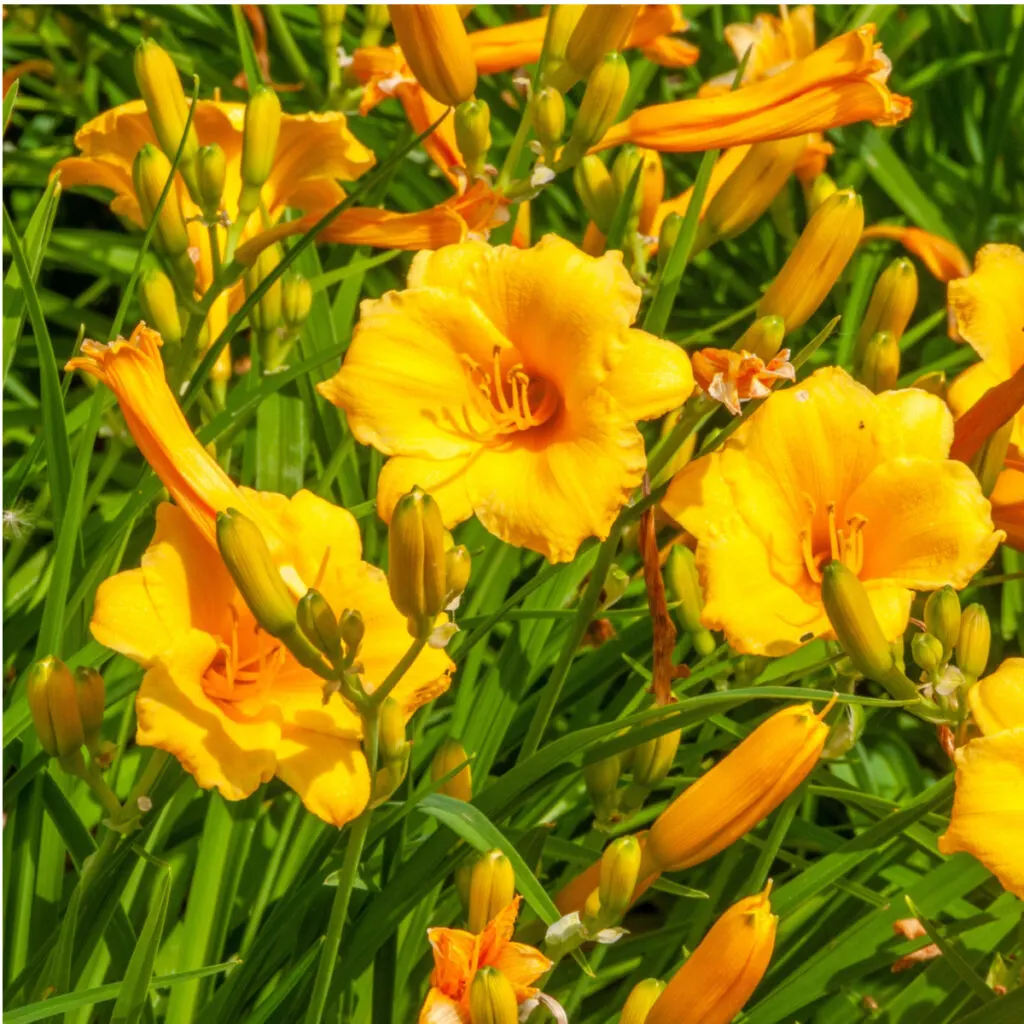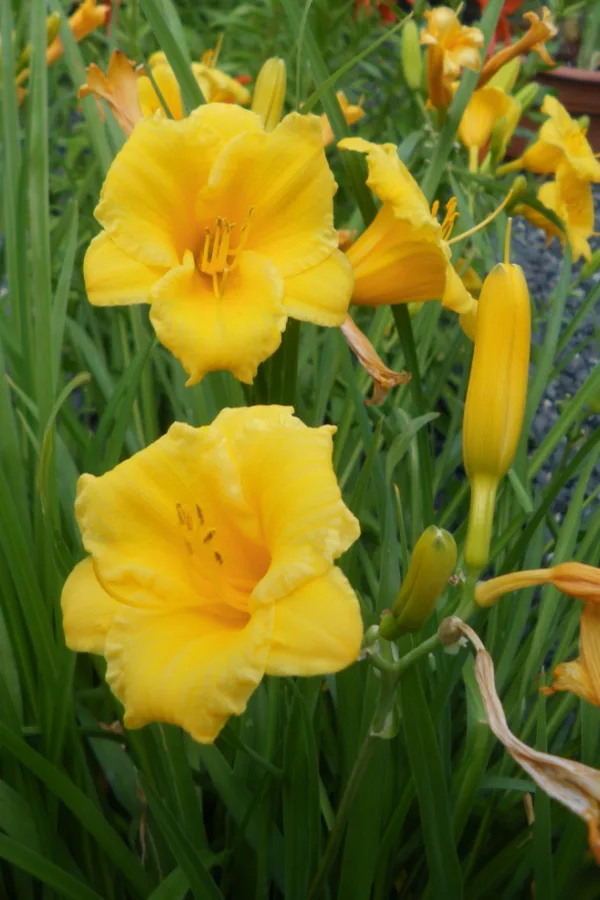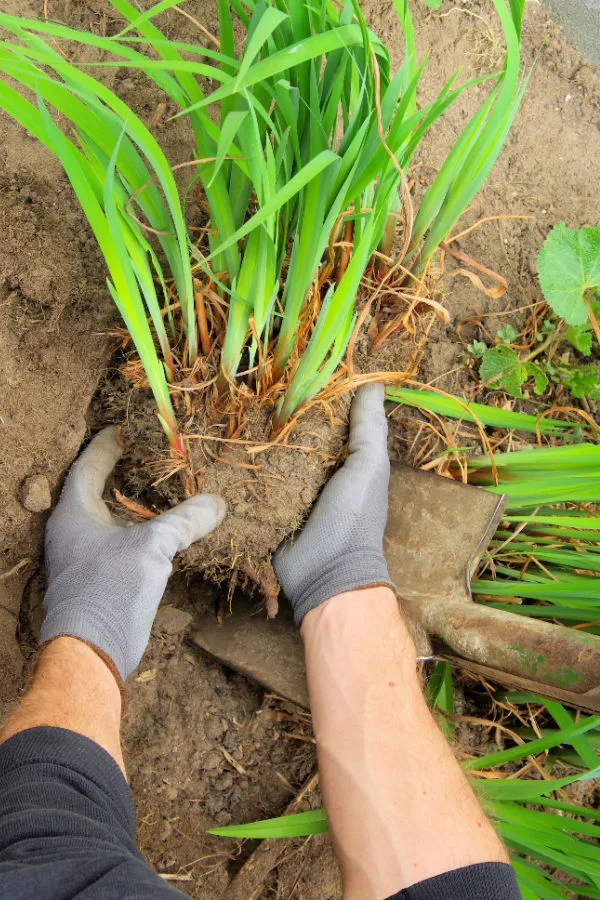Looking for a few secrets to get your daylilies to bloom again this year – and keep their foliage strong and healthy too?
There is nothing quite like the beauty that daylilies in full bloom bring to a landscape. With their striking thick foliage and bright long-stemmed trumpet-shaped blooms, the perennial fills flowerbeds with huge interest and big color.
But as summer settles in, many gardeners begin to see the blooms of their beloved daylilies begin to fade and slowly die off. Although the blooming period for lilies can often last a full three weeks or more, it never seems to quite last long enough. Especially if you have to wait until next year to see them again.

But here’s the good news! Did you know that with just a little bit of help, many daylily varieties can easily bloom again during the summer and fall months? With that thought in mind – here are 3 simple secrets to get your daylilies back in action!
3 Simple Secrets To Get Your Daylilies To Bloom Again
#1 Deadheading
One of the best things you can do for the overall health and blooming frequency of your daylilies is to deadhead them. And not just once at the end of their first blooming cycle, but regularly throughout the entire time they are flowering.
As with most blooming annuals and perennials, leaving old blooms on a plant robs it of vital nutrients. Even as a flower begins to die off, plants continue to spend energy on them. In fact, as they die, the plant can expend even more power trying to heal the bloom.
Of course, no amount of nutrients will bring a dying flower back to life. But if the plant can save those resources, it can keep more power in reserve to bloom again.

Every few days, take a bit of time to cut back any daylily flowers that are beginning to fade. When deadheading, don’t just remove the flower but its stem as well. This will ensure the flow of nutrients completely stops to the bloom.
By removing the stem and flower, you stop the flow of resources going to the bloom. Even more importantly, you also help to eliminate additional seed pods from forming – which, as you will see with the next tip – is even more important in helping the plant to conserve energy!
#2 Removing Seed Pods – How To Get Daylilies To Bloom Again
When it comes to keeping your daylilies looking strong and healthy and giving them the best chance of flowering again – removing their seed pods is a must!
Daylilies can reproduce in two ways, from seed – or by division. For gardeners, dividing is certainly the easiest and fastest option for creating more plants.
Not only do seeds take a long time to grow and develop into mature plants – allowing seed pods and seeds to form on your plants also takes a lot of energy and resources. Resources that if saved can instead go towards powering more bloom sets.
How Seed Pods Form
As a daylily begins to complete its blooming cycle, it starts to focus on producing seed pods. Seed pods form and grow out from the old flowering stems. They are often mistaken as new flowers forming as they look quite similar to young bloom sets.

If left alone, the seed pods and stems eventually dry out and fall to the ground. But by removing the stems and pods early, you can prevent this process and save an enormous amount of energy for your plants.
First and foremost, even for daylily varieties that can’t bloom again, removing these seed pods will help the plant to have healthier, more robust foliage for the remainder of the year. It will also help conserve power for even bigger blooms next year.
But for daylily varieties such as the ever popular Stella d’Oro – removing the seed pods and old stems can allow the plant to start producing more and more blooms for the remainder of the growing season.
It’s best to start removing the old stems as soon as the final flowers start to fade. This will stop the flow of nutrients early, before the plant starts trying to form seeds.
Simply follow the old stem down below to the bottom of the plant and snip it off. When cut early, the stems and old flower heads are a great addition to the compost pile. If allowed to go to seed, remove the seed pods before composting as most home compost piles don’t get hot enough to kill the seeds.
Fertilizing – How To Get Daylilies To Bloom Again
Last but not least, to help your daylilies bloom more than once, a little additional power and energy in the form of fertilizer can really make a difference.

Daylilies use a lot of energy to bloom and grow their foliage. And, even when you help them conserve energy by deadheading and removing seed heads, they need more to help produce more blooms.
For daylilies, it is best to use an all-purpose, balanced fertilizer. Granular application are easy to apply and work to slowly release their nutrients to power new growth and blooms. Affiliate Product Link: Premium 10-10-10 All-Purpose Soil Fertilizer
As for when to fertilize, it’s best to start with an early spring application to give extra nutrients for the first bloom. Thereafter, as plants finish their blooming cycle and you are removing the stems, it’s time to give them another dose.
Providing them with nutrients at this point will replenish the energy lost during blooming. It also helps give them a boost to produce new bloom sets and keep their foliage strong.
Dealing With Oversized Plants – How To Get Daylilies To Bloom Again
If daylilies grow too large or grow in the same space for too long, they can often have trouble blooming. When plants get too big, their roots often grow together and crowd each other out.

Although you can wait until fall or early next spring to divide your plants, with daylilies, summer is actually a great time to dig them up, split them into new plants and rejuvenate them. Especially if your plants are simply getting too big and worn out! For more on that process, check out our article : How To Divide Perennials In The Summer With Ease
Here is to getting your daylilies to stay healthy and strong all summer. And even more – getting them to bloom again too! Happy Gardening – Jim and Mary
Jim and Mary Competti have been writing gardening, DIY and recipe articles and books for over 15 years from their 46 acre Ohio farm. The two are frequent speakers on all things gardening and love to travel in their spare time.
As always, feel free to email us at thefarm@owgarden.com with comments, questions, or to simply say hello! You can sign up for our free email list in the subscribe now box in the middle of this article. Follow us on Facebook here : OWG Facebook. This article may contain affiliate links.
